#Landsverk L-60
Text
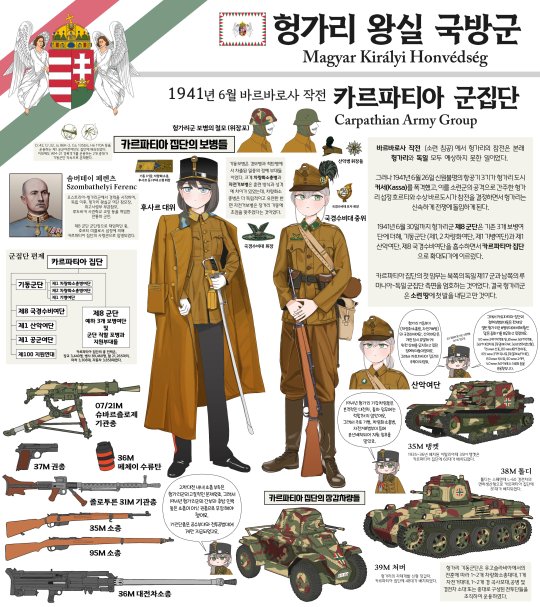

1941 Carpathian Army Group, Hussar Major and Border Guard
#hejjyeo#Kingdom of Hungary#Regency Hungary#small arms#armor#L3/33#CV 33#35M Ansaldo#Toldi I#Landsverk L-60#39M Csaba#FÉG 37M#FÉG 35M#Mannlicher M1895#Solothurn S-18/100#Schwarzlose 07/21
13 notes
·
View notes
Text

A Finnish L-62 Anti II anti-aircraft vehicle, Liikola, Karelian Isthmus, June 15th, 1944.
The Landsverk L-62 Anti II was an anti-aircraft vehicle designed for Finland by Sweden. It used an existing Landsverk L-60 tank chassis and added a turret with the famous 40mm Bofors anti-aircraft gun. Its full designation in service with Finland was Ilmatorjuntapanssarivaunu 41, or Anti-Aircraft Tank 41, the latter number referring to the year designed. During the war, eleven aircraft were shot down by the Anti II, and of the 6 built, all survived the war and several can be found in Finnish museums to this day.
8 notes
·
View notes
Text
Update for the a Tank in Time au.
This update is made because I was able to figure out what types the characters should be, if a tank is chibified I will tell you. OC's will be done seperately.
The metro:
Metro Cats: Type-95 Ha-Go, Type-97 Chi-Ha, Type-4 Ke-Nu
Empress: Type-5 Ho-Ri
Mue: chibified Type-95 Ha-Go
Metro mice: CV-33
Lazy Paw: Type-97 Chi-Ha
Mafia town:
The Mafia: T-34-85, KV85, BT-7
The shopkeepers: Vickers 6-ton
Mustache Girl: Centurion MK III
Mafia boss (old body): Fiat 2000
Mafia Boss (new body): IS-3
Cooking cat: Cromwell MK 1
Battle of the Birds:
Express owls: M2A1 Medium Tank
Moon Penguins: M3 Stuart
The Conductor: M3 Grant
Dj Grooves: Sherman Jumbo
The Conductor's kids: chibified M3 Grants
The Crows: M6 heavy
Subcon forest:
Snatcher: Mark 6 Liberty
Moonjumper: A7V
Dwellers: Da Vinci tank
snatchers minions: Mark 1 whippet
Vanessa: Kwagen
Alpine skyline:
nomads: BT-42, Panzer II
Goats: Ferdinand tank destroyer
Big Bird: E100
Lazy Paw gang members: Type-97 Chi-Ha
Arctic cruise:
fish dude: Stridsvagn m/41
seals: Landsverk L-60
Walrus captain: Stridsvagn 74
Ruin of Calcite and adventure:
shadows: various WW1 and interwar tanks
Tim the CEO of time: Mark 1
Hat Kid: fictional MBT w/flamethrower
Bow Kid: fictional omniwheeled IFV/ATGM carrier.
Puella: Fictional MBT
#A Tank in Time au#a hat in time#hat kid#ahit hat kid#ahit au#ahit bow kid#bow kid#ahit prototype#moleman arg#ahit nomads#ahit arctic cruise#ahit nyakuza#ahit mafia boss#the conductor#dj grooves#mustache girl#ahit mustache girl#snatcher#moonjumper#ahit queen vanessa#ahit lazy paw#How many tanks do you want?#yes
6 notes
·
View notes
Text
Warning for SOC book spoilers.
A while back I casually asked my tank enthusiast housemate about what a real world equivalent could be for the tank near the end of Six Of Crows. We had quite a discussion about the book descriptions and while there's not a lot to go on, and no perfect fits for what it does say about the tank in the book, he came up some suggestions. Eight overall, though some are similar models. For anyone curious (or anyone interested in them as art references?) they are:
Swedish
Interwar era - Landsverk L-10 & L-60
Early ww2 era - Stridsvagn m/41 & m/42
Soviet
Interwar era - BT-7 & T-26
Early ww2 era - T-34 & KV-1
My 4 favourites out of those are pictured below
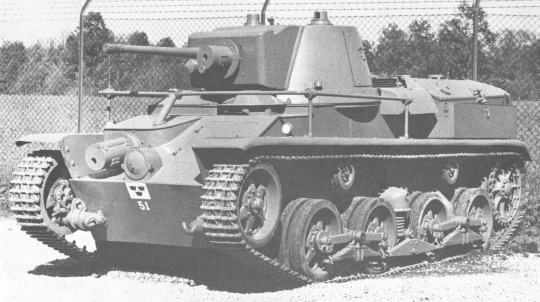
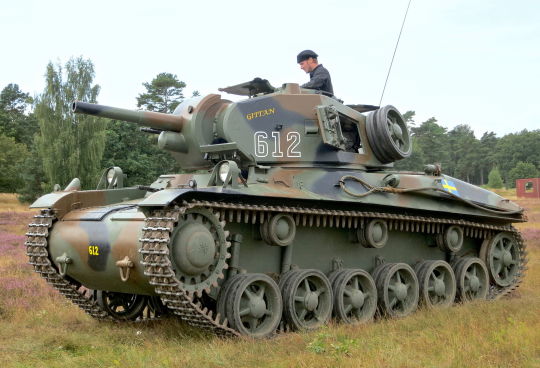

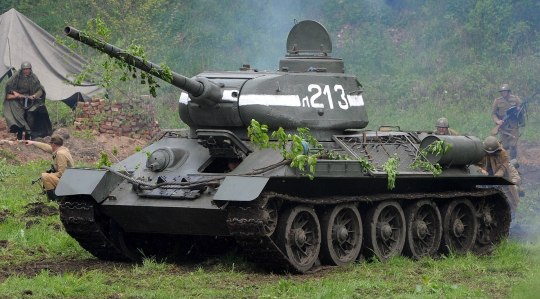
I kind of leant towards picturing something simpler like the T-26 (bottom left) initially, but seeing the T-34 (bottom right) with its hatch open at the front and someone visible there just makes me picture one of the crows poking their head out of that which would be a fun visual as they trundle along 😁
4 notes
·
View notes
Text
0 notes
Text

• 38M Toldi
The 38M Toldi was a Hungarian light tank, based on the Swedish Landsverk L-60 tank, but developed independently. It was named after the 14th century Hungarian knight Miklós Toldi.
After the First World War, the Hungarian Army (Honved) was forbidden by the Treaty of Trianon from developing and using tanks. This prohibition did not prevent Hungarians from acquiring armored vehicles from abroad in the thirties. During the mid-1930s, the Hungarian Army had purchased over 100 Italian light tankettes for its armored forces. These tankettes were fairly obsolete as fighting vehicles even before the start of the war, as they lacked a turret, sufficient armor protection and were weakly armed, with only two machine guns. In 1936, the Hungarian Army made attempts to find more modern types of tanks, to, if not replace, at least supplement the tankettes with more firepower. A few countries, like Italy, Germany and Sweden, were approached for this reason. Eventually, Hungary managed to acquire a single Swedish L-60 light tank in 1937. Once the Swedish vehicle actually arrived, test trials were conducted from mid-June to 1st July 1938 at the Haymasker and Varpalota proving grounds. the Hungarian General Garandy Novak, satisfied with its performance, gave a preliminary suggestion for production of some 64 vehicles. These were to be allocated to the two mechanized and two cavalry brigades. A piece of interesting information worth mentioning here is that, during these trials, a Hungarian V-4 was also tested. After comparing the performance of these two vehicles, the V-4 was not adopted for service.
Following successful negotiations with Sweden, Hungary managed to obtain a licence for the production of this vehicle. At a meeting of the Hungarian War Ministry held on September 2nd, 1938, it was decided to start production of this vehicle with some modifications, mostly regarding its armament. A first production order of 80 vehicles was awarded to MAVAG and Ganz. After observing the lighting-fast German success on the Western Front in May 1940, the Hungarian Army was well impressed and saw that the use of highly mobile motorized units was the future of modern warfare. With the future expansion of their armored force in mind, there was a general demand for more Toldi tanks. For this reason, another order for 110 new vehicles was placed in 1940. The second production series vehicles were simply marked as Toldi II. While, in some sources, it is noted that the Toldi II was better protected, this is false, as, in reality, the only difference was the use of domestically built parts along with some small changes to the suspension. Production of the Toldi I light tank was carried out by the MAVAG and Ganz companies. Almost from the start, there were difficulties with the production, as the Hungarians lacked the experience and production capabilities. Another issue was the need to import some parts from Germany and Sweden, which were essential for the completion of these vehicles (like the Büssing engine, for example). The production order was divided between MAVAG and Ganz, with each company receiving contracts for producing 40 vehicles. The production run lasted from April 1940 to May 1941. The first 80 vehicles built received the H-301 to H-380 registration numbers. Once the first series of 80 vehicles was completed, MAVAG was able to locally produce the needed engine. Thus, it was possible to complete the second Toldi II series with Hungarian made parts, which was important, as it was impossible, due to the war, to obtain additional parts from aboard. The second production run lasted from May 1941 to December 1942.
The Toldi hull had a standard layout, which consisted of the forward-mounted transmission, the central crew compartment and the rear engine compartment. On top of this hull, an armored superstructure that narrowed as it moved towards the engine. On the vehicle’s left front side, the fully protected driver position was located. The driver was provided with an escape hatch on top of it. For observing the surroundings, a front and a left side observation port were installed. On the front upper glacis, a headlight was placed inside a protecting housing, with a grill door that could be lowered and closed. The Toldi turret had two single-piece crew hatches located on each side. Additionally on each side two observation ports were installed. On top of the turret, a command cupola with a large one-piece hatch was placed. When the Toldi was adopted for service with the Hungarian Army, the 20 mm 36M anti-tank rifle was chosen as its main armament. The 20 mm 36M was, in fact, a Solothurn S 18-100 anti-tank rifle. This was done primarily for logistical reasons, as this weapon was already domestically produced. The 36M anti-tank rifle had a rate of fire ranging from 15 to 20 rounds per minute. The armor penetration with the 36M anti-tank rifle (at 60°) at ranges of 600 m was only 10 mm. The Hungarians briefly considered using 3.7 or 4cm caliber guns, but as this would request a redesign of the turret it was not adopted into production. Secondary armament consisted of one 8 mm Gebauer 34/37 machine gun. This machine gun could be dismounted and used in an anti-aircraft role. Inside the tank, some 2,400 rounds of ammunition for the machine gun were carried. The Toldi was lightly protected. The hull front and side armor were only 13 mm thick. The top, bottom and rear armor was even thinner, at 6 mm. The turret was similar, with the front and side armor being 13 mm thick and the rear and top only 6 mm. As this armor was clearly insufficient, it could be easily pierced even by Soviet anti-tank rifles. In an attempt to increase the protection against these anti-tank rifles, one vehicle, was used to test German side armor skirts. While some Toldis would receive this armor, it was employed more on the larger Turan tanks. The Toldi was powered by a German-built Büssing NAG L8V 160 hp 2200, eight-cylinder petrol engine. With a weight of some 8.5 tons, the Toldi was capable of achieving a top speed of 50 km/h. While this was certainly impressive speed for its time, the engine proved to be problematic needing constant maintenance. With a fuel load of 253 liters, the operational range was around 220 km. While, initially, this engine had to be imported, from 1941, the Hungarian manufacturers were later able to produce it locally. The Toldi I and II had a crew that consisted of three crew members. In the left front side of the hull, the driver was positioned. To his rear, in the turret, the remaining two crew members were positioned. Left of the main gun, the gunner/loader was seated. Right of the gunner was the commander of the vehicle. He was provided with a command cupola for a better view of the surroundings. In addition, if the vehicle had radio equipment, the commander’s secondary role was to act as radio operator.
The majority of the first 45 vehicles that were completed by September 1940 were allocated to the tank companies of the 1st and 2nd Cavalry Brigades. Following the expansion and modernization of the Hungarian Army, additional units were to be formed. This included the 9th and the 11th Bicycle Battalions, which were to be reorganized into tank battalions. these two Battalions were to have three Toldi companies and one company equipped with the domestically designed and produced Turan tanks. In addition, the strength of the companies that had Toldi tanks was to be increased from 18 to 23 vehicles. As the production of the Turan was unable to start on time, as a temporary solution, these two Battalions were to be equipped with four Toldi companies. Due to a lack of Toldi vehicles, these two Battalions were eventually equipped with only two incomplete 18 vehicle strong companies. Some of the Toldi light tanks of the 1st and 2nd Cavalry Brigades were used as occupying forces in the Transylvania region, which was taken over from Romania in September 1940 after the Second Vienna Award. The Hungarian government officially joined the Axis forces on September 27th,1940. Its first joint military operation with other Axis allies was the occupation of the Kingdom of Yugoslavia. For this operation, the Hungarian Army mobilized its Fast Corp (Gyorshadtest), which consisted of the 1st and 2nd Motorized Brigades, together with the 2nd Cavalry Brigade. Each of these units had a 18 vehicles strong Toldi company, for a total of 54 tanks. While the 1st Cavalry Brigade was also part of this Fast Corp, it was not used during this theater of war. The Toldi’s first real combat use was during the short April War (Axis occupation of the Kingdom of Yugoslavia) that lasted from the 6th to 17th of April 1941. During this short campaign, many Toldi tanks were left un-operational mostly do to mechanical issues and engine failure.
While the Hungarians were not eager to wage war with the Soviets, they nevertheless joined the Axis forces during Operation Barbarossa. The Hungarians officially declared war on the USSR on June 27th, after Soviet air bomb raids into Hungary occurred the previous day. For the Invasion of the Soviet Union, the Hungarians allocated the 1st and 2nd Motorized Brigades and the 2nd Cavalry Brigade. By this time, the number of Toldis had increased to 81 vehicles. Due to insufficient numbers of Toldi tanks, some 60 Italian-bought tankettes had to be used to supplement the ranks. On 13th July 1941, elements from the 9th Tank Battalion (from the 1st Motorized Brigade) attacked the Soviet positions on the hills near Khmelnytskyi (Хмельни́цький). During this fight, one Toldi, was hit by a Soviet anti-tank gun. The vehicle was immobilized and the two other crew members were killed. A second Toldi tank that was nearby, in an attempt to protect the damaged vehicle, took position in front of it. While this provided protection for the damaged tank the second tank became the new main target for the Soviet anti-tank guns. This resulted in the loss of the tank with its crew. In the following Hungarian attack, the hill was taken with the destruction of three Soviet anti-tank guns. By late July 1941, the 1st Motorized Brigade managed to destroy some 24 Soviet armored vehicles. But, despite initial successes, the Toldi losses began to rise, mostly due to mechanical breakdowns. Due to the rapid increase of losses, in July 1941, the Hungarians were forced to send a further 14 Toldi tanks, along with many spare parts and engines. By August, there were 57 operational Toldi tanks on this front. By the end of October 1941, the Hungarian force had advanced nearly 1,000 km into the Soviet Union, up to the Donets River. Supplying and reinforcing these units became more and more difficult, and with the rising losses and urgent need for repair, the Hungarians ordered that these forces be pulled back home for recuperation. While the Hungarian tank losses were high, with all the tankettes being lost together with 80% of Toldis. While some 25 were damaged in combat, a greater number of 62 was lost due to mechanical breakdowns. Almost all could be recovered. While these could be repaired, it took some time to do so and, for this reason, only a small number of Toldi tanks were available for the 1942 campaign. The fighting in 1941 also pointed out the Toldi’s shortcomings, mostly regarding its armament and armor. While the main gun did have a chance against the lightly protected Soviet pre-war designs, it was useless against the T-34 and the KV series.
In 1942, the 1st Armored Division was formed, using mainly T-38s (German-supplied Panzer 38(t)) which were supplemented with a smaller number of Toldi tanks. Some 14 were given to the 1st Armored Reconnaissance Battalion and 5 vehicles to the 51st Anti-Tank Battalion, but, in reality, only 17 were available for service. By the end of August 1942, the Toldi units suffered losses, with only 5 being fully operational. As 1942 proved disastrous for the Axis forces on the Eastern Front, 11 Toldi tanks were lost. In 1943, due to losses in equipment and men, the Hungarians did not send new armored units to the Soviet Union. By April 1944, there were 176 Toldi (all types) light tanks still operational. At that time, the front line units using them were the 2nd Armored Division in Galicia and the 1st Cavalry Division fighting near Warsaw. In June 1944, there were some 66 Toldi I and II and 63 Toldi IIa operational. During its operational service life, the Toldi chassis was used for a number of improvements and tests. These include the ambulance transport, anti-tank hunter and up-gunned and better-protected versions. In an attempt to increase the combat efficiency of the Toldi tanks, the Hungarians made two attempts to improve their firepower and armor protection. The Toldi IIa version had a new 40 mm gun and stronger armor. Some 80 Toldis were modified for this configuration. The Toldi III was similar to the Toldi IIa, but with 35 mm of frontal armor, but less than 20 were eventually built.
Today, there is only one surviving Toldi I and one Toldi IIa light tank. Both can be seen in the well known Kubinka Military Museum in Russia. While Hungary was not a superpower, it managed to produce relatively high numbers of domestically-built tanks, including 190 Toldi light tanks. While the Toldi I and II were the backbone of the Hungarian armored units in 1941, by that time, they were already obsolete. Their low armor protection and small-caliber main weapon were almost useless against Soviet armor. But, somewhat surprisingly, despite their obsolescence, the majority were lost to breakdowns and not to enemy fire.
#second world war#world war ii#world war 2#wwii#military history#history#long post#tank warfare#tanks#hungarian history#hungarian#light tanks#world of tanks
20 notes
·
View notes
Photo
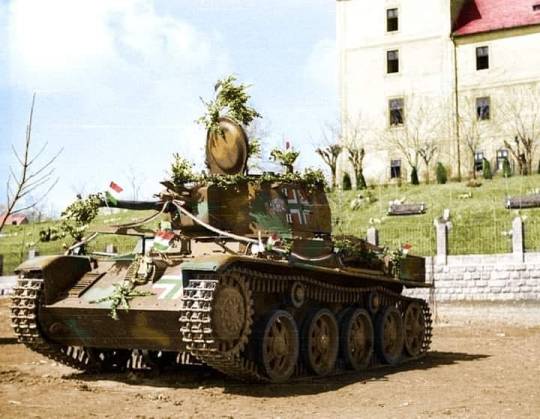
Tanque 38M Toldi El 38M Toldi era un tanque ligero húngaro, basado en el tanque sueco Landsverk L-60. Fue nombrado en conmemoración del caballero húngaro del siglo XIV Miklós Toldi. El 38M Toldi fue producido y desarrollado bajo licencia de la compañía sueca AB Landsverk entre 1939 y 1942. Solo se produjeron 202. Los tanques Toldi entraron al servicio húngaro en 1940. Primero vieron acción con el ejército húngaro contra Yugoslavia en 1941. Estos tanques se usaron principalmente contra la Unión Soviética entre 1941 y 1944. Debido a su blindaje ligero, armamento y buenos equipos de comunicación, se usaron principalmente para el reconocimiento. El diseño fue efectivo contra los tanques ligeros soviéticos durante las primeras etapas de la Operación Barbarroja, como los obsoletos T-26 y BT-5. Sin embargo, era totalmente inadecuado contra los tanques medianos soviéticos T-34 durante las etapas avanzadas de la guerra en el frente oriental. https://www.instagram.com/p/CEVYsdWggq7/?igshid=nscve0owpsna
0 notes
Text
Meghan Markle's trainer reveals 6 tips for avoiding holiday weight gain
Meghan Markle’s trainer reveals 6 tips for avoiding holiday weight gain
By Gabby Landsverk of Insider Pool/Samir Hussein contributor/Getty Images
Between the cold weather and an abundance of meal-based gatherings, holiday season can wreak havoc on your healthy habits. But it doesn’t have to, according to Sebastien Lagree, founder of Lagree Fitness and personal trainer to a long list of A-list stars, including Meghan Markle, Michelle Obama, Rihanna, and Kim…
View On WordPress
0 notes
Text
38M Toldi, Hungarian Light Tank: World War II
38M Toldi, Hungarian Light Tank: World War II
The Hungarian Toldi Light Tank was born from the Swedish AB Landsverk L-60 Light Tank, a tracked, turreted, armored fighting vehicle appearing with Swedish military forces beginning in 1934.
The type was also operated under the Irish Army banner for a time.
The L-60 appeared in four major production marks (L-60A, L-60B, L-60C, and L-60D) for the Swedes of which the Toldi was based on the L-60B…
View On WordPress
0 notes
Photo
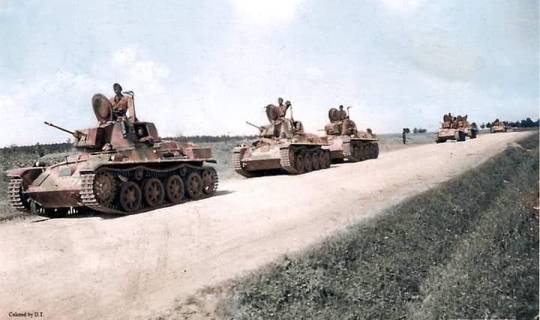
Tanque 38M Toldi El 38M Toldi era un tanque ligero húngaro, basado en el tanque sueco Landsverk L-60. Fue nombrado en conmemoración del caballero húngaro del siglo XIV Miklós Toldi. El 38M Toldi fue producido y desarrollado bajo licencia de la compañía sueca AB Landsverk entre 1939 y 1942. Solo se produjeron 202. Los tanques Toldi entraron al servicio húngaro en 1940. Primero vieron acción con el ejército húngaro contra Yugoslavia en 1941. Estos tanques se usaron principalmente contra la Unión Soviética entre 1941 y 1944. Debido a su blindaje ligero, armamento y buenos equipos de comunicación, se usaron principalmente para el reconocimiento. El diseño fue efectivo contra los tanques ligeros soviéticos durante las primeras etapas de la Operación Barbarroja, como los obsoletos T-26 y BT-5. Sin embargo, era totalmente inadecuado contra los tanques medianos soviéticos T-34 durante las etapas avanzadas de la guerra en el frente oriental. https://www.instagram.com/p/B-e5QVdgB_G/?igshid=14x9v95gy6ruz
0 notes